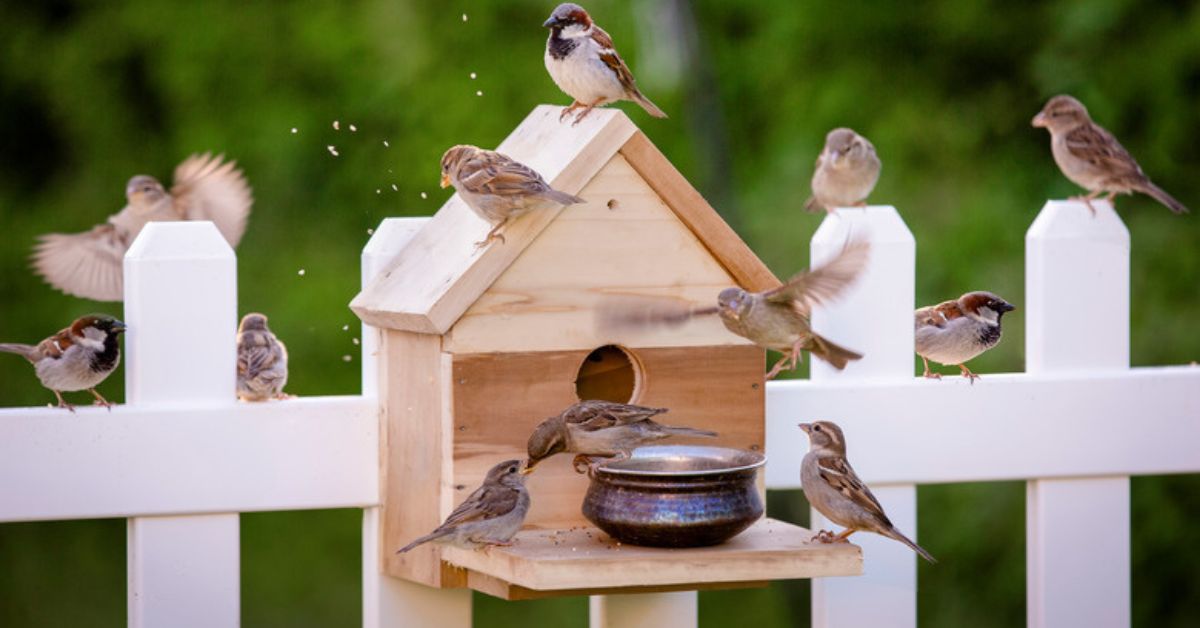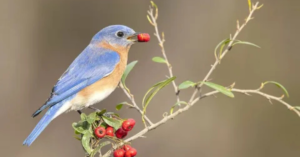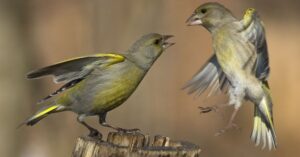Balcony bird feeding can attract a diverse array of species right to your home. As urban living spaces become more common, many city dwellers are discovering the joys of birdwatching from their own balconies.
This article will guide you through essential tips for setting up a bird feeder for your balcony, ensuring that you create an inviting space for our feathered friends while enhancing your outdoor experience. By the end, you’ll have practical strategies to turn your balcony into a vibrant bird haven.
Why Feed Birds From Your Balcony?
1.1 The Joy Of Connecting With Nature
Balcony bird feeding transforms an ordinary urban space into a vibrant wildlife sanctuary, providing a unique opportunity to connect with nature. The simple act of placing a bird feeder for your balcony opens a window to observe the intricate behaviors and diverse species that visit your home.
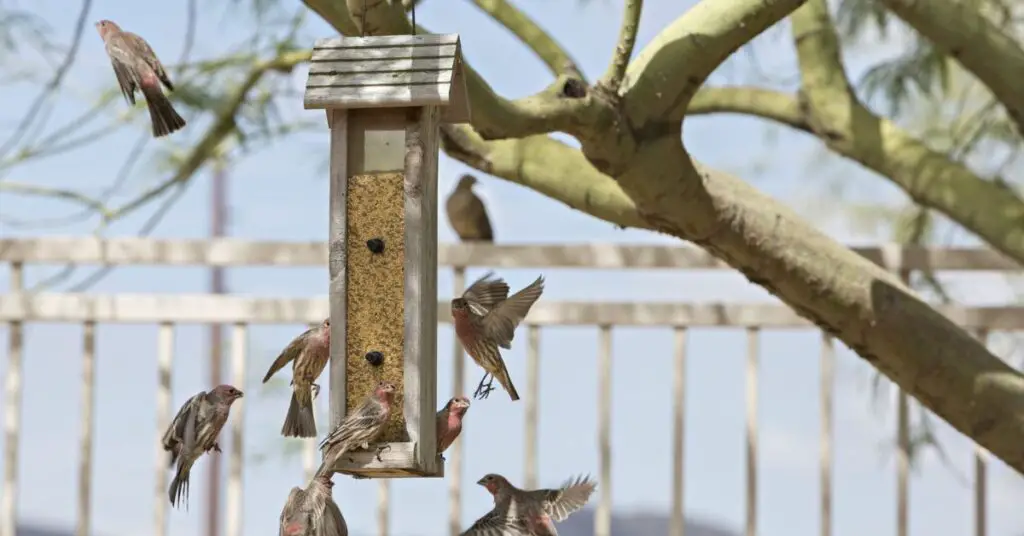
Each flutter of wings and cheerful chirp becomes a reminder of the beauty and resilience of wildlife, even in bustling city environments.
This daily ritual fosters mindfulness, encouraging you to slow down and appreciate the small moments in life. As you watch colorful finches or curious sparrows navigate their way to the feeder, you become part of a larger ecosystem, witnessing the delicate balance of nature right outside your door.
This connection not only enriches your own life but also promotes awareness about avian species and their habitats, fostering a sense of responsibility toward conservation efforts.
1.2 Supporting Local Bird Populations
Balcony bird feeding not only brings joy and beauty to your urban environment but also plays a crucial role in supporting local bird populations. Many species face challenges such as habitat loss, climate change, and food scarcity, particularly in densely populated areas.
By providing a reliable food source, you can help sustain these feathered friends during critical times, especially in winter or during migration when natural food sources may be limited. Your balcony can become a sanctuary for birds, offering them nourishment and a safe place to rest.
1.3 Turning Your Balcony Into A Bird Sanctuary
Transforming your balcony into a bird sanctuary not only invites the beauty of nature into your daily life but also creates a vibrant ecosystem right outside your window. By providing food, water, and shelter, you can attract various bird species, enriching your environment with their songs and colors.
Consider incorporating native plants in pots or vertical gardens; these offer natural perches and attract local insects that birds feed on.
Utilizing bird feeders strategically positioned at different heights can enhance your balcony’s appeal to a wider variety of birds. Opt for feeders that cater to specific species, such as suet feeders for woodpeckers or tube feeders for finches, to diversify your feathered visitors.
Setting up a small water feature or birdbath not only serves as a hydration source but also encourages bathing behaviors, which are entertaining to observe.
2. Understanding Local Bird Species In The USA
2.1 Common Balcony Birds Across Different Regions
Across the United States, balconies can serve as vibrant habitats for a variety of bird species, each uniquely adapted to their regional environments. In the Northeast, The American Robin is a familiar sight, often seen hopping along balcony railings or pecking at potted plants.
Their cheerful song adds a melodic backdrop to urban living, making them a beloved presence in cities like New York and Boston. The West Coast boasts the energetic Anna’s Hummingbird, which dazzles onlookers with its iridescent plumage as it flits between balcony flowers, showcasing nature’s artistry in even the most confined spaces.
In the Southeast, the Eastern Bluebird frequently makes an appearance, bringing a splash of color that contrasts beautifully with the greenery typical of this region. Their gentle calls can create a serene atmosphere, inviting residents to pause and appreciate the simple joys of nature.
The Midwest often sees the industrious House Sparrow, a resilient bird that thrives in urban settings. These adaptable birds remind us that even amidst concrete and steel, life finds a way to flourish.
2.2 Migratory Vs. Resident Birds: What To Know
Understanding the distinction between migratory and resident birds is essential. Migratory birds, such as the majestic Arctic Tern or the vibrant Ruby-throated Hummingbird, embark on seasonal journeys that can span thousands of miles.
These migrations are not merely instinctual; they are intricately tied to environmental cues such as temperature changes and food availability. Observing these birds during migration can reveal fascinating behaviors, such as flock formations and feeding strategies that evolve in response to their long journeys.
Resident birds like the Northern Cardinal or the American Robin stay put year-round, adapting to local conditions. These species often exhibit remarkable resilience, utilizing various habitats and food sources to survive winter’s challenges. Resident birds play crucial roles in pollination and seed dispersal, contributing to the health of local flora.
3. The Best Foods For Balcony Birds
3.1 Seeds, Nuts, And Grains
To attract balcony birds, offering a diverse selection of seeds, nuts, and grains can make your space a true avian hotspot. Sunflower seeds are a favorite among many species, particularly for their high oil content, which provides essential energy.
However, don’t stop there; consider adding millet and safflower seeds to the mix. These grains not only appeal to various birds but also encourage different feeding behaviors, creating an engaging spectacle right outside your window.
Nuts, such as unsalted peanuts or walnuts, are another excellent choice that can draw in larger birds like jays and woodpeckers. The rich fats found in nuts help sustain them during colder months when food can be scarce.
Incorporating whole grains like oats or cracked corn can attract ground-feeding birds such as sparrows and doves, inviting a wider range of feathered friends into your urban oasis.
3.2 Fruits And Vegetables Birds Love
To attract birds to your balcony, incorporating fruits and vegetables into their diet can make a significant difference. Many birds are naturally drawn to vibrant colors and sweet flavors, making fruits like berries, apples, and oranges irresistible treats.
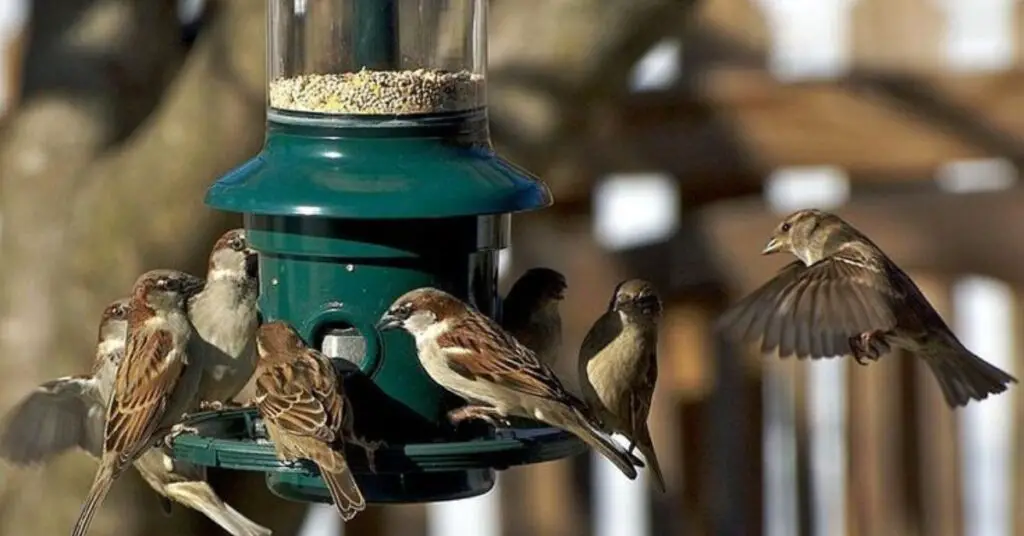
Offering these fresh options not only provides essential nutrients but also creates a visually stunning display that can enhance your outdoor space. Hanging slices of oranges can attract species like orioles, while blueberries and strawberries can entice finches and sparrows.
Vegetables should not be overlooked either; many birds enjoy crunchy options like peas, corn, and even diced bell peppers. These foods are not only nutritious but also offer a variety of textures that stimulate the birds’ natural foraging behaviors.
Placing small bowls of mixed fruits and veggies can encourage social interactions among different bird species, creating a lively atmosphere on your balcony.
3.3 Specialized Bird Food Mixes
Specialized bird food mixes are designed to cater to the diverse dietary needs of various bird species, ensuring that your feathered visitors receive optimal nutrition. These blends often contain a combination of seeds, fruits, nuts, and even insects, appealing to both seed-eaters and insectivores alike.
By offering a variety of textures and flavors, specialized mixes can attract a wider range of birds to your balcony, turning your outdoor space into a vibrant avian sanctuary.
Many commercially available bird food mixes now incorporate health-boosting additives such as probiotics and vitamins, which can enhance the overall well-being of the birds. This not only supports their immune systems but also promotes vibrant plumage and energy levels.
When choosing a specialized mix, look for those that are free from fillers and artificial ingredients; high-quality options ensure that you’re providing the best for your feathered friends.
3.4 Foods To Avoid: What’s Harmful For Birds?
While it may be tempting to share a variety of kitchen scraps with your feathered friends, certain foods can be detrimental to their health. Avocados contain a toxin called persin, which can cause respiratory distress and even death in birds. Similarly, chocolate and caffeine are harmful; they can lead to increased heart rates and hyperactivity, ultimately resulting in serious health issues.
Processed foods often contain additives and preservatives that are not only unnatural but also potentially toxic for birds. Salt is another ingredient to avoid—while it enhances the flavor for humans, it can disrupt a bird’s electrolyte balance and lead to dehydration or kidney problems.
Finally, fruit pits and seeds from apples, cherries, and peaches contain cyanogenic compounds that are hazardous when ingested. By steering clear of these harmful foods, you can ensure a safe and nourishing environment for the birds that grace your balcony.
4. Choosing The Right Bird Feeder For Balcony
4.1 Types Of Bird Feeders And Their Benefits
When selecting balcony bird feeder, understanding the different types available can significantly enhance your avian experience. Tube feeders are excellent for attracting smaller birds like finches and chickadees, as they allow multiple birds to perch and feed simultaneously while keeping seeds sheltered from the elements.
Platform feeders offer a wider surface area, making them ideal for larger species such as doves and jays, allowing you to observe their unique feeding behaviors up close.
For those looking to attract hummingbirds, consider a nectar feeder, which provides a sugary solution that mimics their natural diet. These feeders can also serve as a delightful centerpiece on your balcony, adding a splash of color and movement.
Suet feeders are a fantastic choice for winter months, as they provide high-energy food for woodpeckers and other insectivorous birds, turning your balcony into a year-round sanctuary.
4.2 Positioning Your Feeder Safely
When positioning your bird feeder on a balcony, safety is paramount—not just for the birds, but for your space as well. Start by considering the height and stability of your feeder. Opt for feeders that are securely mounted or have a sturdy base to prevent tipping, especially during gusty winds.
If you choose a hanging feeder, ensure it’s hung high enough to avoid being knocked over by pets or curious children, while still being accessible for the birds.
Another critical factor is the proximity to shelter. Birds often seek refuge from predators and harsh weather, so placing your feeder near trees, shrubs, or other natural cover can encourage visits.
Balance this with the need for visibility; positioning the feeder away from dense foliage can help you enjoy birdwatching without obstructed views. Ensure that the feeder is placed at least a few feet away from walls or railings to prevent birds from flying into them, minimizing the risk of injury.
4.3 Preventing Mess And Spills
When selecting bird feeders for your balcony, consider designs that minimize mess and spills. Opt for feeders with a tray or platform that catches fallen seeds, preventing them from scattering onto your balcony floor. These trays not only make cleanup easier but also provide a secondary feeding area for ground-feeding birds, maximizing your birdwatching experience.
Another effective strategy is to choose feeders with seed ports that restrict the amount of seed dispensed at one time. This feature helps reduce waste while ensuring that birds can still access food without creating a mess. Consider investing in feeders made from materials that are easy to clean, such as metal or certain plastics, which resist staining and can withstand frequent washing.
5. Creating A Bird-Friendly Balcony Environment
5.1 Adding Plants That Attract Birds
When designing a bird-friendly balcony, selecting the right plants is crucial to creating an inviting habitat. Native plants are particularly effective, as they provide essential food sources and shelter for local bird species.
Consider incorporating flowering plants that produce seeds or nectar, such as coneflowers or sunflowers, which can attract a variety of birds, including finches and hummingbirds. Shrubs with berries, like serviceberries or elderberries, serve as both food and nesting sites, making your balcony a bustling hub of avian activity.
Layering your plant choices is another effective strategy. By combining tall plants with mid-sized and trailing varieties, you can create a diverse vertical space that mimics natural environments.
This not only enhances aesthetics but also offers different perches and hiding spots for birds. Incorporating fragrant herbs, such as lavender or basil, can further enrich the sensory experience for both birds and humans, inviting pollinators while adding delightful aromas.
5.2 Providing Water Sources: Bowls, Birdbaths, And DIY Ideas
Water is a vital resource for birds, especially in urban settings where natural water sources may be scarce. Opt for a design that features a textured bottom, which allows birds to perch safely while they drink or bathe. Regularly changing the water not only keeps it clean but also attracts different species throughout the day, as they are drawn to fresh sources.
If you’re feeling crafty, consider DIY options that add character to your balcony while serving a practical purpose. A simple yet effective idea is to repurpose a large terracotta pot saucer; fill it with pebbles and water, allowing birds to wade without the risk of drowning. For those with a flair for creativity, crafting a hanging birdbath from an old colander can provide an eye-catching element while ensuring drainage.
5.3 Designing A Shelter For Safety
Designing a shelter for birds on your balcony involves more than just providing a roof over their heads; it’s about creating a haven that mimics their natural habitat. Start by incorporating elements like a small, sturdy birdhouse made from untreated wood, which allows for ventilation and insulation.
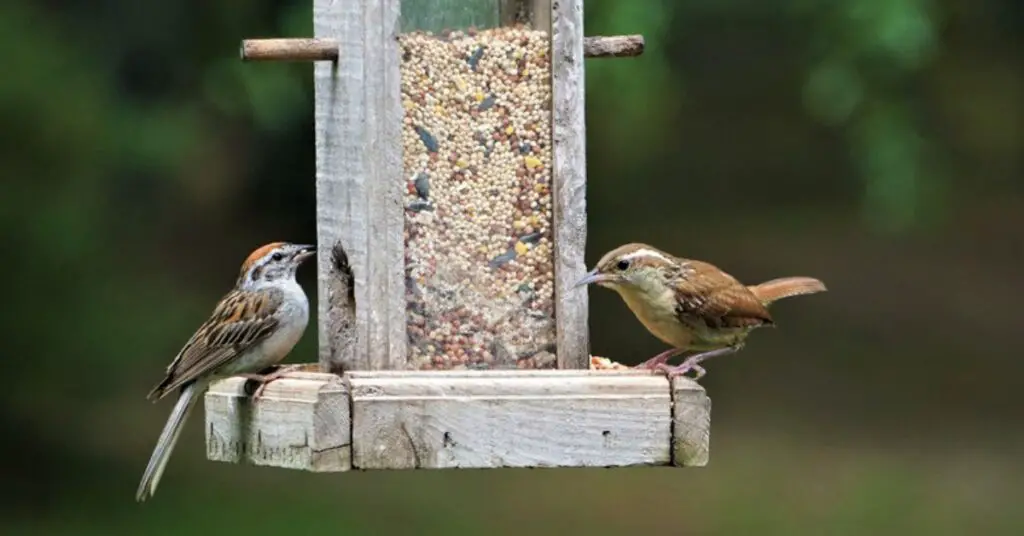
Position it in a way that shields it from harsh winds and direct sunlight, ensuring it remains a safe retreat throughout the day. Adding natural materials such as straw or dried leaves inside can further enhance comfort, inviting feathered friends to take refuge.
Including vertical space can also be beneficial, as many birds prefer to roost high above ground. Consider hanging platforms or perches made from branches to give them the opportunity to observe their surroundings while feeling secure. Using plants with dense foliage not only provides shelter but also offers essential cover from predators.
6. Seasonal Tips For Feeding Birds
6.1 What To Feed Birds In Winter
Winter presents unique challenges for our feathered friends, making it crucial to provide them with the right nutrition during the cold months. High-energy foods are essential as birds expend more energy to stay warm.
Sunflower seeds, particularly black oil sunflower seeds, are a winter favorite due to their high fat content and ease of access for various bird species. Suet cakes made from animal fats combined with seeds or fruits can be a lifesaver for woodpeckers, chickadees, and nuthatches, offering them a concentrated source of energy.
Inclouding dried fruits, like raisins and currants, into your feeding routine can also attract a diverse array of birds, including thrushes and wrens. Consider adding a heated birdbath to your backyard; not only does it provide a crucial water source in freezing temperatures, but it also encourages birds to visit regularly.
Remember to keep feeders clean and well-stocked, as consistent availability of food is vital for their survival.
6.2 Adjusting Food Choices In Spring And Summer
As spring unfolds and summer approaches, the dietary needs of our feathered friends evolve significantly. During these warmer months, birds begin to seek out more protein-rich foods to support their breeding and nesting activities.
Incorporating mealworms, suet, and peanut pieces into your feeders can attract a wider variety of species, including insectivores that are particularly active in this season.
Hydration becomes crucial as temperatures rise. Setting up shallow water dishes or birdbaths can create a vital oasis for birds, encouraging them to visit your yard more frequently. Remember to change the water regularly to prevent stagnation and maintain cleanliness.
By adapting your feeding strategies to align with seasonal changes, you not only support the health and vitality of local bird populations but also enhance your enjoyment of these beautiful creatures as they thrive in the vibrant environment of spring and summer.
6.3 Preparing For Fall Migration
As the days shorten and temperatures cool, preparing your backyard for fall migration can create a welcoming haven for weary travelers. Migratory birds often rely on a reliable food source to fuel their long journeys, making it essential for bird enthusiasts to adjust their feeding strategies.
Start by offering high-energy foods like sunflower seeds, suet, and mealworms. These nutrient-rich options provide the necessary calories birds need to sustain their energy as they navigate to warmer climates.
Consider incorporating native plants that produce berries or seeds during the fall. Plants such as serviceberry and elderberry not only enhance your garden’s aesthetic but also serve as natural food sources for various bird species. Be mindful of keeping your feeders clean and stocked, especially during peak migration times, when flocks may arrive unexpectedly.
7. Preventing Common Challenges
7.1 Keeping Pests (Squirrels And Rats) Away
Preventing pests like squirrels and rats requires a multifaceted approach that goes beyond just sealing entry points. One effective strategy is to create an uninviting environment for these critters.
This can be achieved by managing your landscape; keeping trees trimmed and away from your roof can significantly reduce the likelihood of squirrels finding a pathway into your attic. Maintaining a clean yard free from food sources—such as fallen fruits or birdseed—will discourage both squirrels and rats from making themselves at home.
Another important aspect is to utilize natural deterrents. Planting certain herbs like mint or using predator urine can signal danger to these unwelcome visitors. Incorporating physical barriers, such as wire mesh or fencing, can also serve as a strong line of defense.
It’s essential to remember that these pests are clever; regular monitoring and proactive adjustments to your strategies will be key in ensuring they don’t outsmart your defenses.
7.2 Dealing With Droppings And Balcony Cleanliness
Dealing with droppings on your balcony can be a vexing challenge, but understanding the root causes can help you take proactive measures. Birds are often the primary culprits when it comes to unsightly messes. To deter them, consider installing bird spikes or netting; these solutions create a barrier without harming the birds.
Regular maintenance is key to maintaining balcony cleanliness. Setting up a routine cleaning schedule can significantly reduce the buildup of droppings and debris. Incorporating natural repellents like citrus peels or vinegar can also help keep pests at bay while being environmentally friendly.
7.3 Ensuring Neighbor-Friendly Bird Feeding
When setting up a bird feeding station, it’s essential to consider not just the feathered visitors but also your neighbors. One of the most common challenges is managing bird feed spills, which can attract unwanted pests like rodents or stray cats.
To mitigate this, opt for feeders designed to minimize seed loss, such as those with catch trays or mesh bottoms. Placing feeders on sturdy, elevated poles can help prevent ground feeding and keep seeds from scattering onto the ground.
Another aspect to consider is the type of birds you wish to attract. Large flocks of certain species may overwhelm local residents, leading to complaints about noise or mess. To create a more neighbor-friendly environment, select feeders that cater to specific birds or use seed blends that appeal to less populous species.
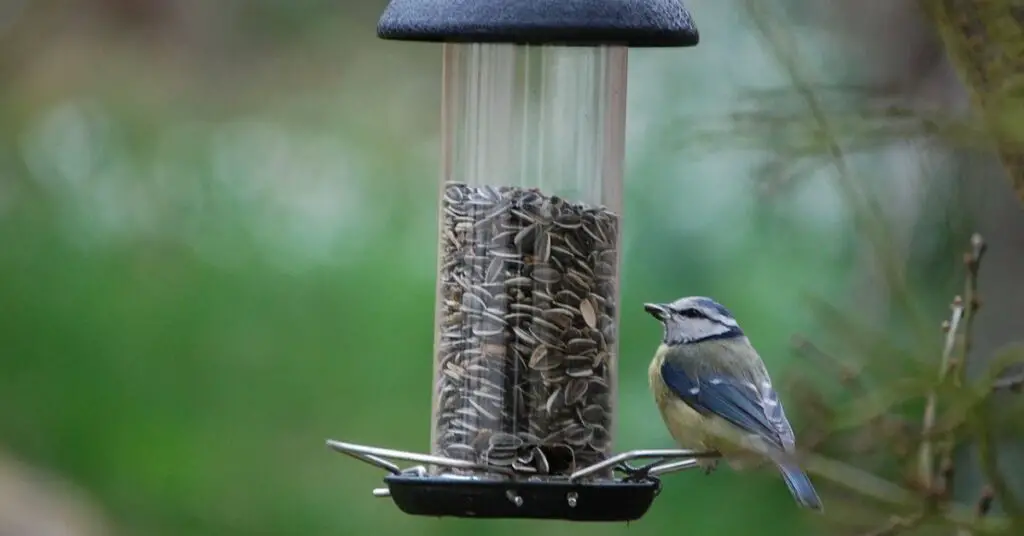
Educating your neighbors about the benefits of bird feeding—like pest control through natural predation—can also foster goodwill.
Conclusion
Balcony bird feeding can be a rewarding experience that connects you with nature right from the comfort of your home. By selecting the appropriate feeders, choosing the right birdseed, and maintaining a clean feeding area, you can attract a variety of birds while ensuring their health and safety.
Remember to consider the local bird species and their feeding habits to optimize your setup. Be mindful of potential challenges such as attracting unwanted pests or ensuring that your feeding practices are compliant with local regulations.
FAQ’s
Can Feeding Birds Attract Unwanted Wildlife?
Feeding birds can indeed attract unwanted wildlife, as the food left out for birds can also appeal to other animals. Common visitors may include squirrels, raccoons, and even larger birds such as crows and starlings, which can outcompete smaller songbirds for food.
How Often Should I Refill The Bird Feeder?
The frequency with which you should refill your bird feeder largely depends on several factors, including the type of birds you’re attracting, the size of your feeder, and the local bird population. Generally, during peak feeding times, such as spring and fall migrations, you may need to refill your feeder every few days or even daily.
What Are The Signs That Birds Are Visiting?
Birds can be delightful visitors to your yard or garden, and there are several signs you can look for to determine if they are making an appearance.
One of the most obvious indicators is the sound of chirping, singing, or calling. Observing physical movements such as flitting from branch to branch or hopping on the ground can indicate their activity in the area.
- How To Keep Bees Away From Hummingbird Feeders - March 20, 2025
- How To Attract Owls To Your Yard - March 11, 2025
- Breeding Season For Wild Birds - March 9, 2025
